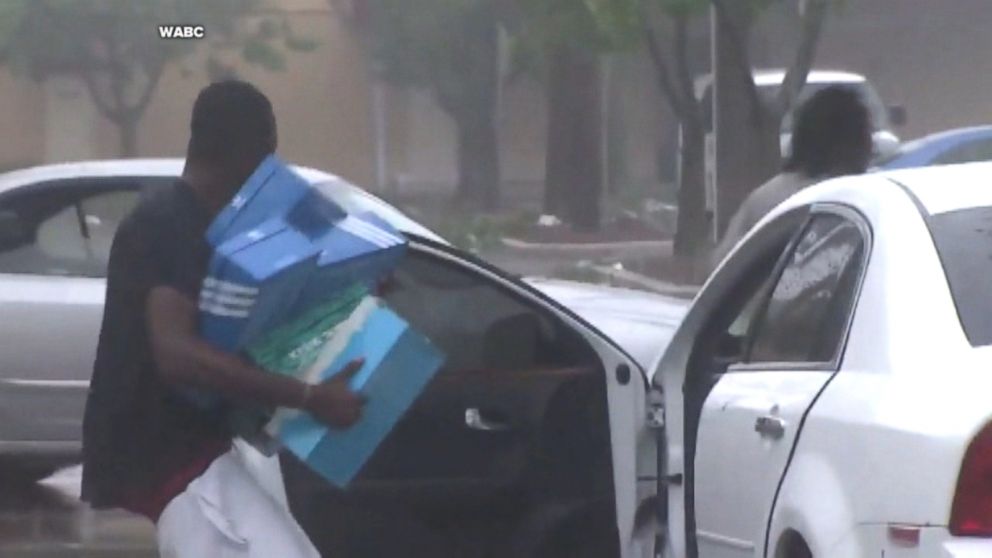California to cut water supply to cities and farmlands amid worsening drought
12/07/2021 / By Mary Villareal

The California Department of Water Resources is planning to restrict water delivery to cities and farmlands amid the ongoing drought that is expected to persist well into next year. This will affect 27 million Californians and three-quarters of a million acres of farmland.
Karla Nemeth, the department’s director, said: “Despite a wet start to the water year, conditions have dried out since that first storm and we are still planning for a below-average water year. That means we need to prepare now for a dry winter and severe drought conditions to continue through 2022.”
According to the U.S. Drought Monitor, much of California is suffering from a severe drought with large pockets of extreme and exceptional drought. This could lead into a megadrought next year if the winter remains as dry because much of the state’s water is derived from rain and snow in the higher northern areas.
California could be looking at the second “Dust Bowl”
Two-thirds of the water demand comes from the southern part of the state. Farms that will not receive water next year could turn into fallow land, and California could be looking at the second “Dust Bowl.”
The Dust Bowl was the name given to the drought-stricken Southern Plains region of the U.S., which suffered severe dust storms during a dry period in the 1930s.
California is the largest agricultural producer in the U.S., with farms and ranches generating $49 billion in sales in 2020. It gets most of its water from rain and snow in the mountains in the north and is distributed south through two systems: one is owned by the state, and another is controlled by the federal government.
The 700-mile State Water Project extends two-thirds of the length of California, and 30 percent of its water is used for irrigation in farming-rich Central Valley. The rest of the water is then supplied to homes, cities and towns as well as industrial customers. The federal system – which consists of 20 dams and reservoirs, 11 powerplants and 500 miles of canals and tunnels – supplies water to about a third of the agricultural land, but also has had to cut delivery because of the drought.
This is the earliest date that the department issued a zero percent water allocation, which reflects the dire conditions that California is in. State water officials said that mandatory water restrictions could be coming and water districts are being urged to conserve.
“If conditions continue [to be] this dry, we will see mandatory cutbacks,” Nemeth said.
Californians can still drink and bathe
While this level of low allocation is unprecedented, it does not mean that Californians will be at risk of losing water for drinking or bathing. The State Water Project is one source of water for the 29 districts it supplies. There are also other sources, such as the Colorado River and local storage projects.
The state will need to provide a small amount of water for health and safety needs to some of the districts, but those districts won’t get water for any other purpose such as irrigation, landscaping and gardening.
Districts that rely on the state can have a maximum amount they can request each year, and the allocation represents how much they can give based on available supplies. Last year, which was the state’s second-driest on record, showed that allocation went from 10 percent in December to five percent in March.
Adel Hagekhalil, the Metropolitan Water District of Southern California general manager, said in a statement: “The dramatic reduction of our northern California supplies means we all must step up our conservation efforts. Reduce the amount you are watering outside by a day, or two. Take shorter showers. Fix leaks. If we all do our part, we’ll get through this together.” (Related: Drought: California government caught violating its own water restrictions.)
Nemeth also said the state could set mandatory restrictions if local districts don’t set their own and if the voluntary efforts fail to meet the goal.
Read more stories about severe droughts and other natural disasters at Climate.news.
Sources include:
Tagged Under: agriculture, California, clean water, climate, Collapse, Department of Water Resources, Drought, Ecology, environment, farming, harvest, natural disaster, severe drought, water supply
RECENT NEWS & ARTICLES
COPYRIGHT © 2017 CALIFORNIACOLLAPSE.NEWS
All content posted on this site is protected under Free Speech. CaliforniaCollapse.news is not responsible for content written by contributing authors. The information on this site is provided for educational and entertainment purposes only. It is not intended as a substitute for professional advice of any kind. CaliforniaCollapse.news assumes no responsibility for the use or misuse of this material. All trademarks, registered trademarks and service marks mentioned on this site are the property of their respective owners.



















